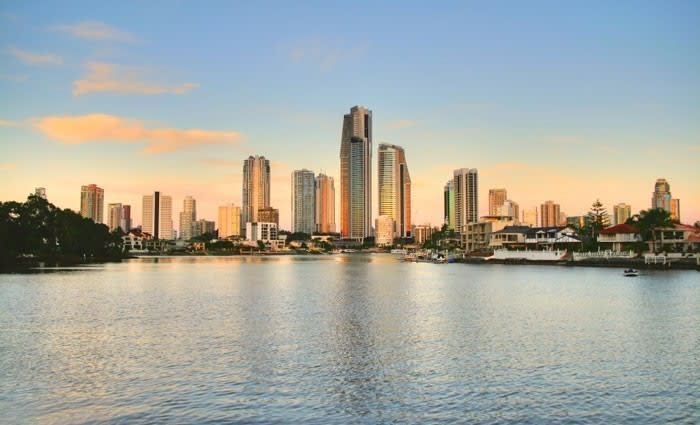Beware the Gold Coast propaganda machine: Terry Ryder
It’s danger time for investors tempted to buy high-rise apartments on the Gold Coast.
There are few entities more skilled in the art of seduction than the Gold Coast propaganda machine.
What makes it doubly dangerous is that the Gold Coast can spin a pretty plausible story right now, as long as it ignores its appalling record on capital growth.
There’s the high level of spending on infrastructure. There’s the billions that corporations, both Australian and foreign, want to throw at casinos, resort hotels, cruise ship terminals and mega high-rise apartment blocks. There’s the marketing appeal of the 2018 Commonwealth Games.
Marketers can pull together some credible-sounding data which suggests that the oversupply of the past has been soaked up and that markets are growing again.
The marketing machine will have little trouble mounting a case that the market is beyond recovery and is rising rapidly. And there is no shortage of gun-for-hire companies purporting to be independent and willing to make a statistics-based case for the viability of all those new mega towers.
Last week a report claiming the Gold Coast will need another 133 apartment towers just to cope with the impending population boom got widespread media coverage. It’s amazing how readily media will take a piece of crystal-ball-gazing and turn it into fact for consumption by a gullible public.
A bullish and self-serving forecast was converted into a statement that the population will jump 76% in the next 20 years. And “many of those people will need to be housed in high-rise apartments” and the population growth will “mean demand for 156,000 new dwellings to cope with the influx”.
I wonder how many investors will pause to consider the outcome if those predictions are wide of the mark. Population projections are never accurate. Even in the short periods between the official census counts, government and private sector population estimates are shown to be faulty, and sometimes wildly inaccurate.
Property investors are essentially herd animals and the impulse to follow the pack as it starts to stampede towards the latest Gold Coast mirage will be irresistible for many. The FOMO Syndrome will drive too many to pay too much for generic high-rise dwellings in an oversupplied market and spend the next five to ten years regretting it.
It’s all happened many times before on the Gold Coast. But investors seldom learn the lessons of history, in some cases because they are blissfully ignorant of it.
They need to know that the Gold Coast has not yet fully emerged from the most recent glut of high-rise apartments, one that has taken six years to absorb. In that time property values have gone backwards in all the major high-rise suburbs – and are still in reverse.
Two major research sources – Australian Property Monitors and the Real Estate Institute of Queensland – confirm that the median prices for apartments Surfers Paradise, Main Beach, Broadbeach and Southport remain significantly lower than they were five years ago.
And prices are still falling. In the past 12 months, prices have fallen further in Surfers Paradise (down 2.9%), Main Beach (down 4.1%) and Southport (down 4.3%).
In the cases of both Surfers Paradise and Broadbeach, apartments are worth less today than they were in 2005. For both Main Beach and Southport, prices are still at the same levels as 10 years ago. The investors who bought in these locations a decade ago have had no capital growth at all. How many markets can you say that about?
In Surfers Paradise, prices fell in the past three months, the past 12 months ago, the past three years, the past five years and the past 10 years. Not a single growth figure to be found. Of all the big-name markets around Australia, perhaps only Noosa on the Sunshine Coast is a bigger dud.
Those who bought in the Gold Coast high-rise markets five years ago have lost a lot of money. In Main Beach, the median unit price has dropped from $652,000 in 2010 to $561,000 today. The average punter is $91,000 worse off. There are similar results for Surfers Paradise, Broadbeach and Southport.
And it’s all about to happen all over again. Only this time, the outcomes will be worse, because the towers being built are larger and more numerous.
For investors who are susceptible to a strong marketing pitch, it’s time to be afraid, be very afraid.
Terry Ryder is the founder of hotspotting.com.au. You can email him or follow him on Twitter.
